Well, this Filipino shortbread is definitely a treat, something that has been captivating the taste buds of generations of Filipinos for a long time already. And in this article, we’ll talk about where it comes from, what’s in it, and why people love it.
Let’s dive in!
What is a polvoron?
So, first things first. Polvoron, often referred to as “polvorones” in Spanish, is a traditional Filipino shortbread cookie that is renowned for its crumbly and melt-in-your-mouth texture. It is a sweet, powdery confection characterized by its oval or round shape, depending on the polvoron molds used. The polvoron or shortbread cookies are usually presented in colorful cellophane or Japanese paper—the colors add to the fun of eating one.
The Filipino’s polvoron can also be eaten as a dessert or snack powder from jars. The toasted flour and/or powdered milk sugar make for an attractive treat, especially for children.
What is polvoron in English, and its origin?
“Polvoron” derives from the Spanish word “polvo,” which means powder. This highlights its powdery consistency. While it is similar to a type of Spanish shortbread also called “polvorón,” the Filipino version has unique characteristics and preparation methods since it was adapted to suit local tastes. It’s now as Filipino as banana ketchup or chicken adobo!
What is Filipino polvoron made of?
The primary ingredients of this Filipino food include:
- Toasted flour: Toasting flour provides the polvoron with its crumbly texture. This flour is carefully toasted for the polvoron’s distinct flavor and aroma.
- Powdered milk: Powdered milk is a must in any polvoron recipe. It adds a creamy and milky flavor and is one of the key elements that set it apart from traditional shortbread cookies.
- Sugar: Polvoron’s sweetness comes from sugar, which is blended with the other ingredients to create a balanced taste. It can be granulated sugar, milk sugar, or any kind of powdered sugar. Do take note that the choice of sugar affects the color of your end result.
- Butter or margarine: Butter or margarine is the binding agent for this Filipino shortbread cookie, holding the ingredients together and giving polvoron its melt-in-your-mouth quality.
- Toasted rice: This is an optional ingredient. Some add this to add a crunch and additional texture and flavor to polvoron.
Why is polvoron so popular among Filipinos?
For Filipinos, polvoron isn’t just a treat; it’s a piece of nostalgia. Many Filipinos recall childhood memories of making these with their grandparents or receiving these sweet treats during school events, fiestas, or from relatives returning from trips. Given its compact nature and colorful wrapping, polvoron is also a favorite pasalubong (gift/souvenir) for Filipinos to give when they visit friends or relatives.
What is the best powdered milk for polvoron?
While various brands can be used, it’s recommended to use high-quality, full-fat powdered milk to achieve the best taste and consistency.
Can polvoron expire?
You might assume that polvoron doesn’t expire because of its dry texture. However, like any other food product, polvoron can expire. That’s especially true since it has dairy content from powdered milk and butter.
Always check the expiration date if store-bought. If you’ve made homemade polvoron, consume it within 1-2 weeks for the best taste and freshness. The best way to store polvoron and keep it fresh is to store it in an airtight container in a cool, dry place, or refrigerated for a longer shelf life.
Can polvoron make you fat?
Polvoron contains sugar, butter, and milk – all of which have calories. Plus, it’s a sweet treat and is definitely not a keto dessert food. This means that, yes, regularly consuming them in large amounts without burning off the calories can lead to weight gain.
Can polvoron have flavors?
Yes, you can make polvoron that has different flavors. One popular variant is the ube polvoron, which incorporates the flavor of ube or purple yam. This gives the treat a distinctive purple hue and adds a unique taste to the candy.
Other flavors can be white chocolate, peanut, mango, matcha, cookies and cream and pretty much whatever else you can think of!
How do you make polvoron?
There are plenty of polvoron recipes you can follow, but here are the basic steps:
- In a pan, toast the flour over low heat until it turns golden brown. Let it cool.
- If you want to add toasted rice, get a separate pan, then toast the rice until it’s crispy and fragrant. Allow it to cool, then crush it into small bits.
- In a mixing bowl, combine the toasted flour, milk, sugar, and butter, and crushed toasted rice. Melt the butter and add it to the dry mixture. Mix well until the ingredients are fully incorporated.
- Using polvoron molds or your hands, shape the mixture into your desired shapes, whether round, oval, or whatever shape of mold you have.
- Let the polvoron set in the refrigerator for about 30 minutes.
- When done, you can serve as is, or wrap them in colorful cellophane or paper.
Now you have your homemade polvoron to enjoy or share with friends and family!
Want to make better polvoron at home?
Making polvoron is straightforward, allowing many to enjoy its taste. But wouldn’t you want to craft a polvoron that’s not only delicious but also world-class?
If the answer is yes, then we have some good news for you! Check out Chef Miko Aspiras’ latest course here at The Bailiwick Academy: Madrid Fusiòn Polvoron!
Chef Miko originally showcased his artisanal polvoron creations at the prestigious Madrid Fusión, a globally renowned culinary event that gathers top culinary talents and food enthusiasts from around the world. They were received with acclaim—and now, he’s sharing his recipes with us!
The Milky Cashew Polvoron has a buttery richness of roasted cashews that melds harmoniously with the velvety smoothness of pure milk. Meanwhile, the Strawberry Goat Cheese Polvoron offers a delightful contrast, uniting the subtle tang and sweetness of strawberries with creamy goat cheese. For an exotic twist, the Ube Coconut Polvoron combines the vibrant Ube with the tropical charm of coconut.
And last but definitely not the least, the Maiz con Kasuy Polvoron pays homage to cherished nostalgia, reimagining the classic corn and cashew combination with a modern touch, creating a delectable symphony of sweet and nutty flavors.
These polvorons are perfect not just for eating at home; they’re great for gifting, for catering menus, and food businesses!
So what are you waiting for? Sign up at The Bailiwick Academy today and start making artisanal polvoron now!
Final Thoughts
Polvoron is a sweet treat that many Filipinos love. It brings back memories for some and introduces a new taste for others. From its simple ingredients to the fancy versions made by chefs, it shows how a simple snack can become something special.
If you haven’t tried polvoron yet, it’s guaranteed that you’re in for a treat. And if you already love it, there’s always a new flavor to try. So, whether you’re making it at home or tasting a chef’s version, enjoy every bite of this Filipino favorite!
—
Keep coming back to The Bailiwick Academy blog for more baking and cooking tips, kitchen tricks, and much more!
]]>It’s great for chefs who have plenty of skills, experience, and equipment to do so. But wait: what if you’re a home chef who wants to go to the next level with their skills? Is it hard to make avant-garde food at home?
Well, let’s find out in this post, shall we?
Key Takeaways
- The avant-garde cuisine definition is that it is a style of cooking that breaks away from traditional cooking methods and presentations with the use of unusual ingredients and new techniques to create unique, experimental dishes.
- You can use various techniques to create avant-garde cuisine dishes, such as molecular gastronomy, liquid nitrogen, and even ingredients such as insects or vegetables for desserts.
- With a little practice and ingenuity, you can make avant-garde cuisine even if you’re a home chef!
What is the meaning of avant-garde?
When did avant-garde start? Some say it was way back in the 1850s, but more importantly, what is avant-garde style?
The word avant-garde means “advanced guard” in French. However, in this use case, it simply means styles, ideas, and methods that are far ahead in comparison to the period in which they happen. For example, you could consider the idea of flying in an airplane an “avant-garde” idea back in the day.
So what is avant-garde cuisine, or what is avant-garde in food? Well, one of the most well-known avant-garde chefs, Ferran Adrià, explains it using a bunch of grapes, which is worth a watch. But if you’re in a hurry, just put “avant-garde” in the context of cuisine.
You’ll find that it means the use of new and unconventional techniques, ingredients, and ways of presentation. The point is for the chef to be able to create a different kind of culinary experience for diners – an experience they’ll find they’ll never forget! This is also probably the reason why avant-garde is primarily associated with fine dining restaurants, and not usually with home cooking.
How do chefs achieve avant-garde cuisine?
There are plenty of avant-garde cooking techniques that chefs use to push the boundaries of what’s possible in the kitchen. Here are a few examples:
Molecular Gastronomy
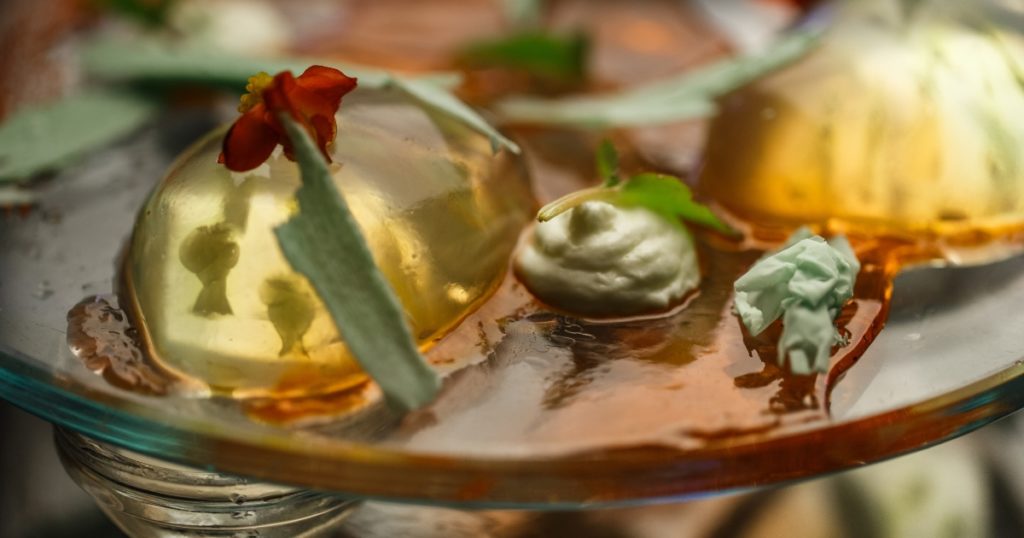
Molecular gastronomy is a sub-discipline of food science that focuses on the physical and chemical processes that occur during cooking. It often involves the use of high-tech tools and techniques to create avant-garde haute cuisine dishes. This involves using scientific principles to create unique textures, flavors, and presentations.
Deconstructed Dishes
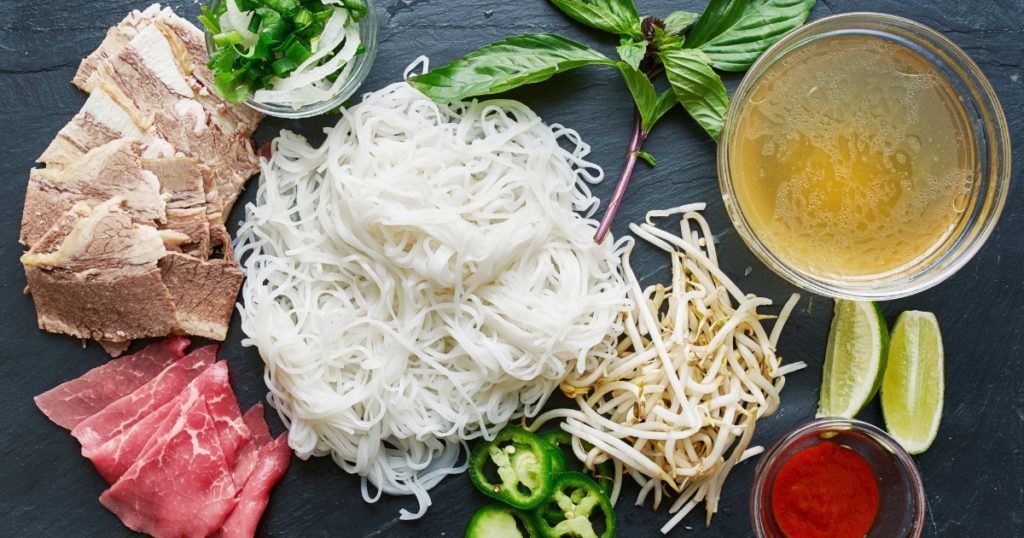
The name means exactly that: deconstruction. It’s actually a pretty simple method how to be avant-garde: chefs take a traditional dish and present it in a completely different way. For example, a pizza is presented as separate components, such as tomato foam, basil oil, and parmesan crisps.
Food Foam
Food foam involves creating a light, airy foam from a variety of ingredients. Chefs usually have a special tool called a siphon to create these foams, which can be flavored with everything from fruit juices to spices.
Edible Art

If you’ve ever wanted to use food to make art, well, you’d fit right in! Plenty of avant-garde chefs now do the same thing. They might use gold leaves or other decorative elements to creative dishes that are visually stunning.
A marker of avant-garde cuisine, after all, is the emphasis on artistic presentation,
This involves using food as a medium to create works of art. For example, chefs might use edible flowers, gold leaf, and other decorative elements to create visually stunning dishes. Another hallmark of avant-garde cuisine is its emphasis on artistic presentation. Edible art, such as using edible flowers, gold leaf, and other decorative elements, can create visually stunning dishes that are sure to impress.
Great examples of these are The Bailiwick Academy’s classes Art of Edible Flowers and the Gravity Defying Balancing Toys Cake.
Sous Vide Cooking
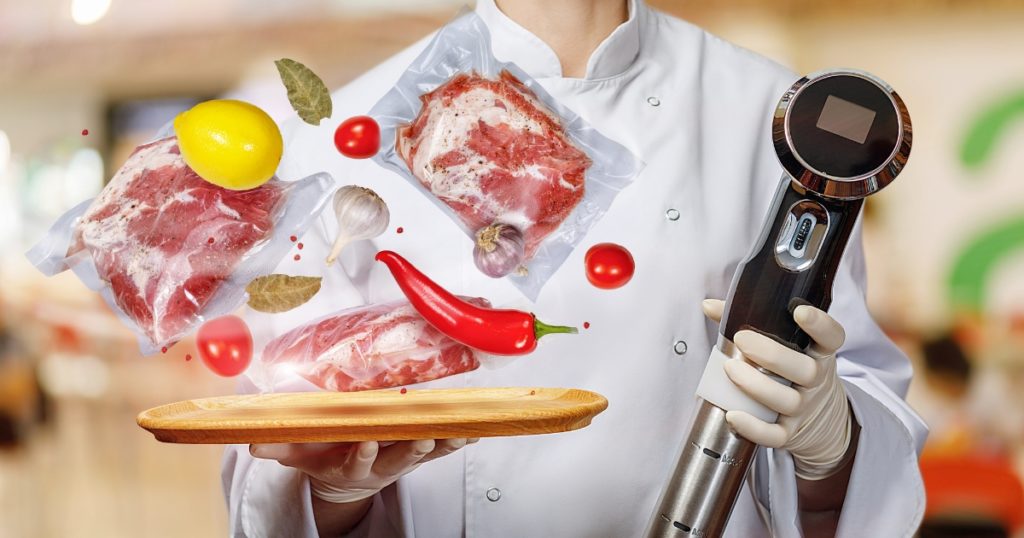
This technique involves cooking food in a vacuum-sealed bag at a precise temperature for an extended period of time. You’ll know you did this right when you get tender and flavorful dishes that are cooked evenly.
Liquid Nitrogen
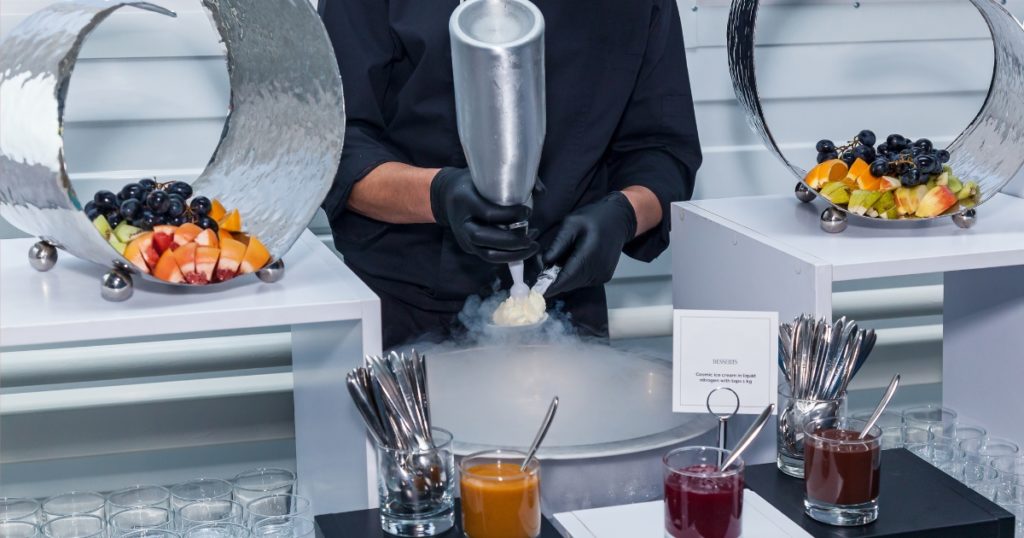
Chefs literally use liquid nitrogen to rapidly freeze ingredients, thanks to its temperature of minus 320.44 degrees Fahrenheit. And with such a quick freeze, the texture of food is preserved and the original structure of the item remains intact! This can help chefs make unique textures and flavors, such as a crispy exterior and a creamy interior.
However, do take note that the use of liquid nitrogen does have the potential to be harmful. Only those who have proper training or who are under supervision should try this technique.
Vegetable-Based Desserts
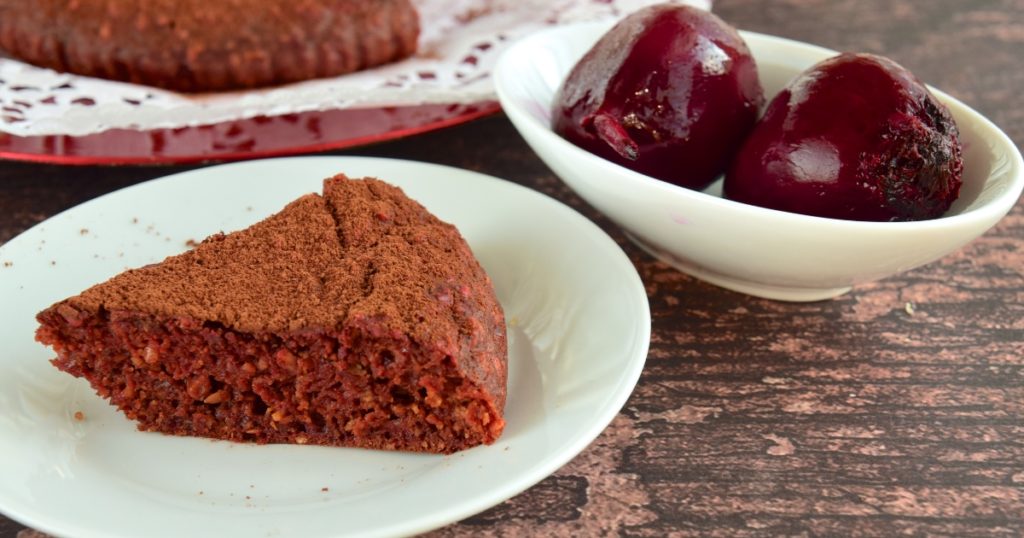
If you’re thinking of avant-garde vegan cooking, well, that possibility exists as well! This kind of avant-garde cooking involves using vegetables as the main ingredients for a dish, such as beetroot and chocolate cake or carrot cake.
Use of unusual ingredients
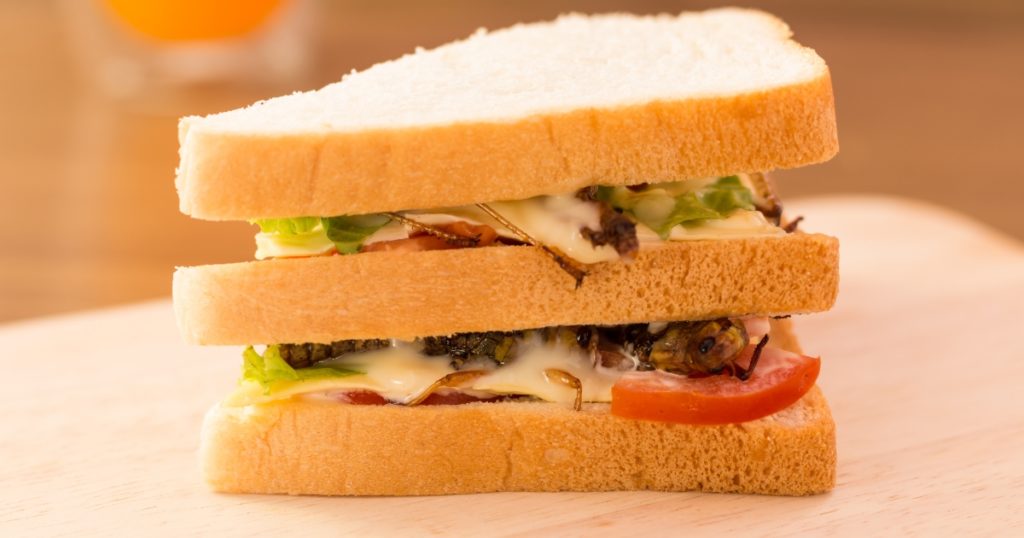
Want to go really weird, unique, and next level? Well, go past just using vegetables as the main ingredients. Go use insects such as crickets and ants! Some chefs even use algae and white truffles.
Using these ingredients may be intimidating at first, but when used properly, you’ll definitely get a memorable dish!
Is it hard to make avant-garde cuisine at home?
Avant-garde restaurants usually have a lot of expensive equipment and different ingredients to achieve avant-garde culinary goodness. So is it possible to achieve the same at home?
Well, here’s some good news: while avant-garde cuisine may seem intimidating, many of the techniques used can be adapted for home cooking!
For example, you can experiment with sous vide cooking with the use of a precision cooker. You can also try creating foam with a handheld frother. Some ingredients, like edible flowers or gold leaf, can be purchased online or at specialty food stores.
In short, the possibilities are endless!
A word of advice about avant-garde cuisine
While avant-garde food can give you, your family, friends, and customers some pretty awesome taste experiences, there are also some potential downsides to consider. For one thing, it can be expensive to purchase special equipment and ingredients.
Also, not all experimental dishes are satisfying. Additionally, some techniques, such as using liquid nitrogen, can be dangerous if not used properly.
Our suggestion is that if you plan to get into this niche, it’s best to go all in! This will prevent you from wasting time and resources on unused ingredients. You also won’t have any regrets about buying any expensive equipment.
Avant-garde cuisine is definitely worth trying!
To wrap things up, avant-garde cuisine recipes are still something worth trying to make, even if it’s just you doing home cooking. You’ll be able to unlock exciting and innovative recipes that will give you new and unexpected taste experiences. It can be a little intimidating to make at first, but just do some research, practice a lot, and you can adapt plenty of these techniques for home cooking!
Want to make avant-garde cuisine at home?
Want to try your hand at making some avant-garde cuisine at home? Well, you can with The Bailiwick Academy. Try avant-garde cooking with TBA’s resident rebellious chef, Chef Miko Aspiras!
How? By taking Chef Miko’s latest online class: Unique Cookie Concepts!
We’re sure you love cookies, correct? Well, in this class, you’ll be able to take cookies to the next level – and love them even more! You’ll be able to make three avant-garde flavors:
- Horlicks Chewy Cookie and Cheese Pots is a sweet and savory cookie with a chewy Horlicks flavored cookie base and is filled with a tangy, subtly sweet cream cheese feeling. And on top, it’s dusted with a Horlicks sugar mixture. It will definitely captivate anyone’s cookie craving as a unique cookie experience.
- The Mochi Matcha Cookie is a cookie within a cookie! Chocolate cookie with a surprise cookie center topped with homemade marshmallow
- soft, chewy, and delightfully earthy cookie with a chewy mochi center and a crisp white chocolate top. Matcha lovers will definitely enjoy this, and convert people to loving matcha too!
- The S’mores Cookie Inception is every cookie lover’s dream come true! It’s a chocolate cookie with a surprise cookie center, then topped with a homemade marshmallow. In short, it’s two cookies in one! Who isn’t going to love that?
After this class, you’ll have successfully created avant-garde cuisine, made new products for your food business, and set a new standard for cookie greatness! And isn’t it a great feeling knowing you just did it at home, without fancy equipment whatsoever?
So what are you waiting for? Sign up at The Bailiwick Academy today and get started on making these unique cookie concepts!
—
Keep coming back to The Bailiwick Academy blog for more kitchen tips, tricks, and much more!
]]>If you’ve eaten from delicious restaurants like Poison Donuts, Workshop Bakery, and Scout’s Honor, then congratulations. You have already experienced the genius of one of The Bailiwick Academy’s instructors, Chef Miko Aspiras!
At a very young age, Chef Miko is already living the dream most chefs would want. He has multiple restaurants and awards under his belt and has been featured on multiple websites and magazines, not just locally but also abroad. He is even known for coining the term basque burnt cheesecake!
What more could any chef want?
His accomplishments are certainly very aspirational. But oftentimes, we forget that successful people had to do a boatload of work before getting their breakthrough.
And that’s why in today’s blog, let’s take a quick, closer look at Chef Miko’s journey, and let’s appreciate all the work he did to get where is today.
Get ready to be inspired!
Chef Miko Aspiras’ beginnings
Chef Miko told Philippines Tatler that his love for food came at a very early age. For example, when he was five years old, every time he didn’t like the food that was being served to him, he would mix seasonings, herbs, and spices with rice.
But Chef Miko’s first true baking experience was when he was 11 years old. He assisted his Aunt Annie in making food for her catering business. This particular experience was the start of his walking down his current culinary path.
He then started studying hotel and restaurant management at De La Salle-College of Saint Benilde. What he would do next would be one of the many accomplishments he would have in his more than 10 years of baking.
One of Chef Miko’s first wins
While he was still studying, he joined a cheesecake competition and made it into the finals, even if he didn’t have any culinary or pastry training. As he says in his interview with Harvard Business Review:
“During the elimination round, one chef even said that my entry was not edible. I thought I’d be eliminated but the judges gave me a chance and a spot on the final round because they said my concept was strong and they saw potential in me.”
What he did instead was to keep practicing the recipe, a white chocolate and strawberry fondue cheesecake, over and over. And he won first place!
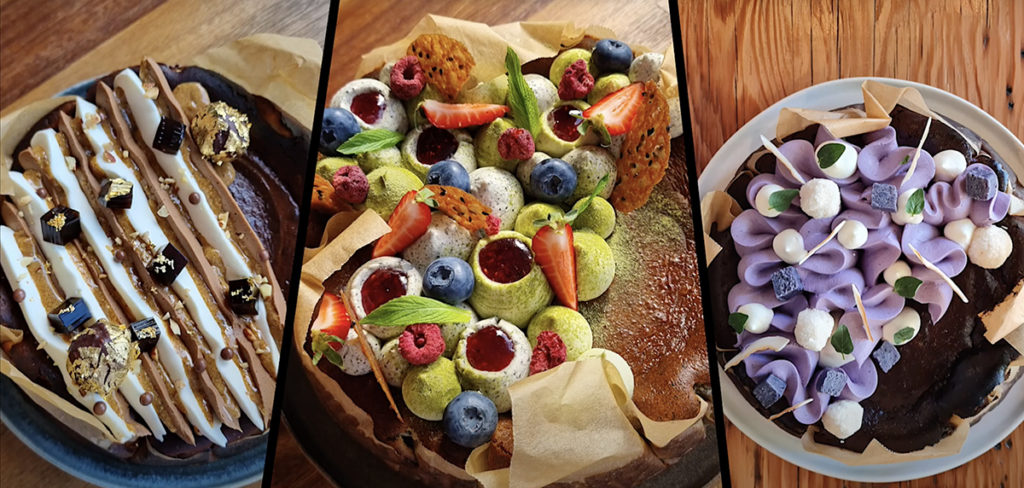
According to this SBS article, after this, Chef Miko would then gain recognition as the best pastry chef out of 175 students. And as soon as he graduated, he was hired by EDSA Shangri-La as a commis chef.
Solidifying his pastry presence
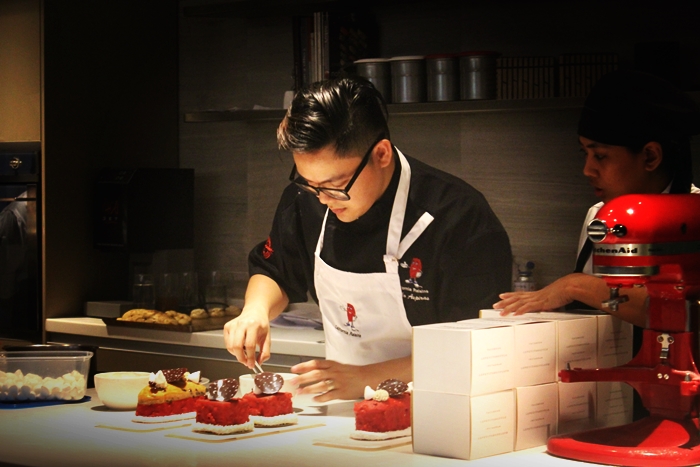
Even if he already got hired by one of the best hotels in the country and won first place in a competition, Chef Miko Aspiras didn’t let success get to his head. If anything, he wanted to achieve more!
And in fact, he did:
- He was invited by the Pastry Alliance of the Philippines to represent the Philippines in a contest in Hong Kong, where he won the gold medal.
- He has a total of six golds, three silvers, and two bronzes, both for local and international competitions.
- Chef Miko Aspiras was one of the speakers at the 2016 Madrid Fusion Manila event.
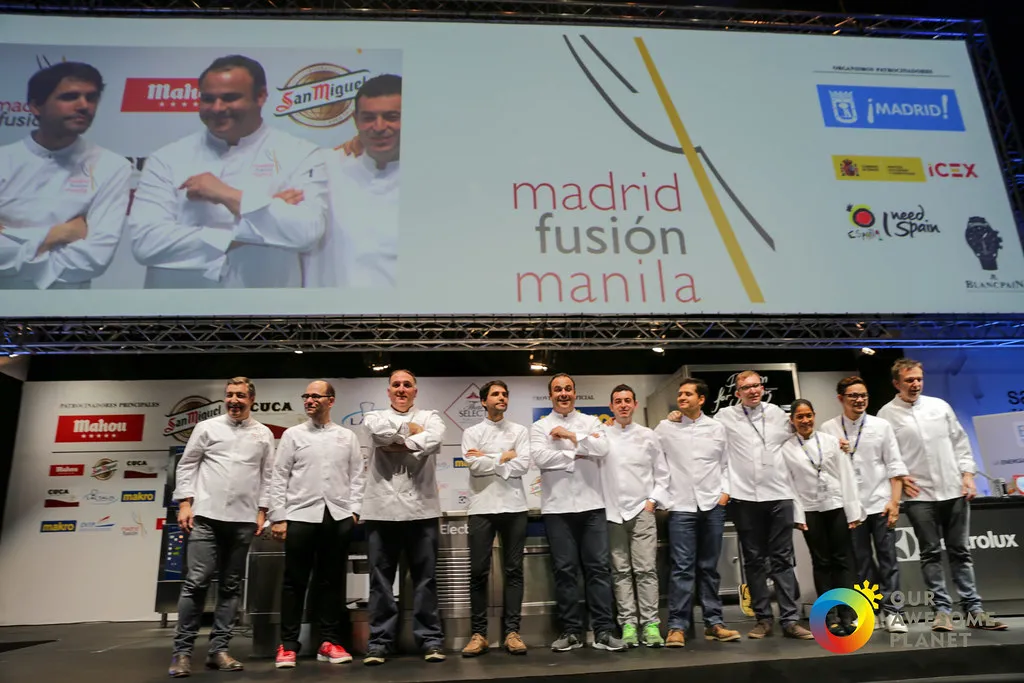
- He has also worked for Maxims Hotel and Fairmont Hotel, where he created unforgettable desserts.
- Chef Miko was featured in Asia’s Forbes 30 under 30, Moneysense’s “Millionaires Under 30”, and recognized as Philippine Tatler’s Best Pastry Chef in 2018.
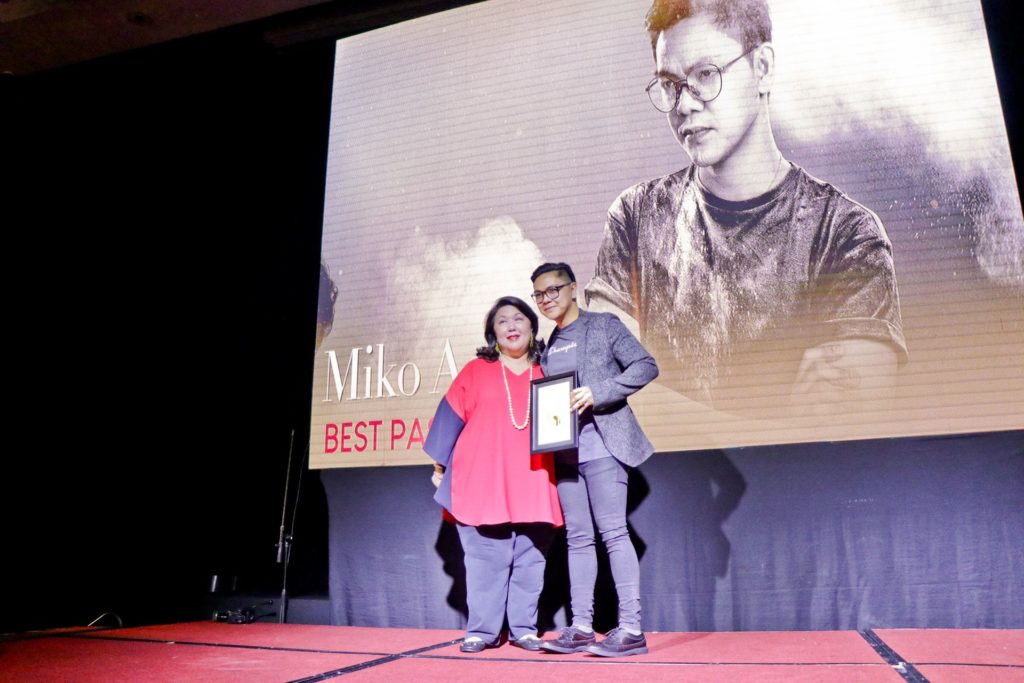
- He opened Tasteless Food Group with partners. They currently have more than 20 stores and seven concepts (including franchises) across Manila.

- He wrote a book with Chef Aileen Anastacio entitled A Piece of Cake.
- Of course, let’s not forget that he has online classes with us at The Bailiwick Academy involving the basque burnt cheesecake, croquembouche, and fruits!
The move to Australia
In June of 2019, he and his husband JV moved to Australia.

In an interview with Australian Filipina, he shared that the move was an eventuality. Plus, he felt that he had already accomplished all that he could in the Philippines.
And true to his tenacious nature, Chef Miko Aspiras hit the ground running upon arrival. Three days after the move, he scored an interview at the Hilton and became the Executive Pastry Chef at Hilton Sydney!
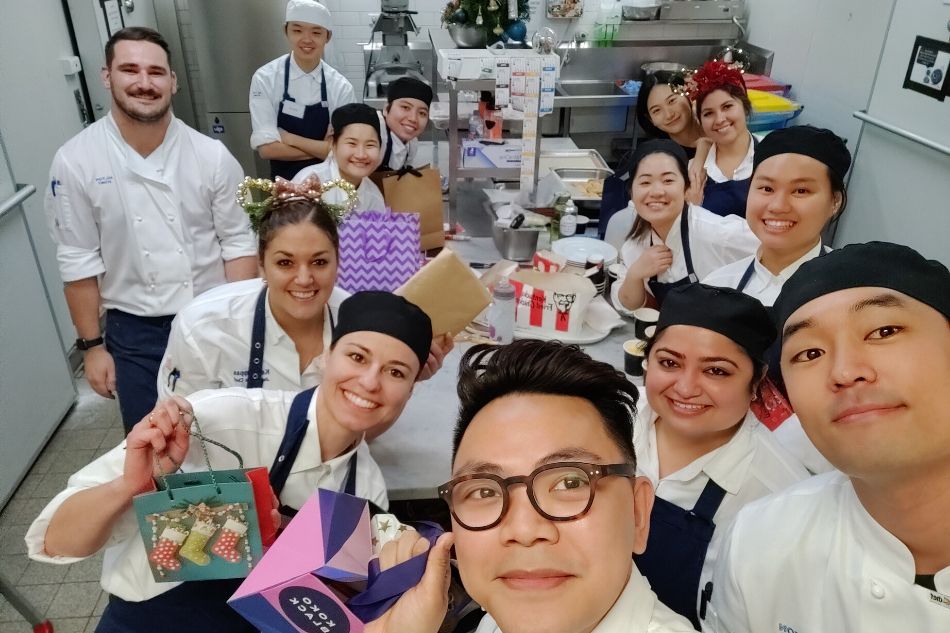
Sadly, because of the pandemic, they were all let go. But Chef Miko wouldn’t be as influential and as well-known if he let setbacks stop him, right?
That’s why in June 2021, he put up Don’t Doughnuts.

He calls it a similar concept to the Poison donut in the Philippines, but more leaning towards an Australian audience. And it hasn’t been very long, but it’s already earning rave reviews with its flavors!
Chef Miko hasn’t forgotten his Filipino roots either! He is well-known for his love of the country and always highlighting Filipino ingredients like adlai and calamansi.
He’s doing the same with his donuts! Check out this Choc-nut inspired donut:
And as he shared in an interview with Our Awesome Planet, he even managed to do a project with Select Kuwait, where he created 56 desserts for them.
And on weekends, Chef Miko accepts orders for Basque cheesecakes.
In short… there’s no stopping him anytime soon! We’re proud to have him on our Instructor roster and we can’t wait to see what ideas he comes up with next!
One last Chef Miko Aspiras fact you NEED TO KNOW…
Here’s one last thing you should know about Chef Miko. This thing is probably the most inspiring thing ever about this very talented chef.
You might have missed it.
He revealed it in an interview with Inquirer about being the first Filipino featured in So Good Magazine, what Chef Miko called “the Vogue for pastry chefs.”
Okay, enough suspense. Here it is:
Before he officially left for Australia with his husband, he has never worked or trained anywhere except in the Philippines. He loved to travel, though. So what he would do during travel was keep his eyes open and pay attention to the various desserts he would see so that he would always have new ideas.
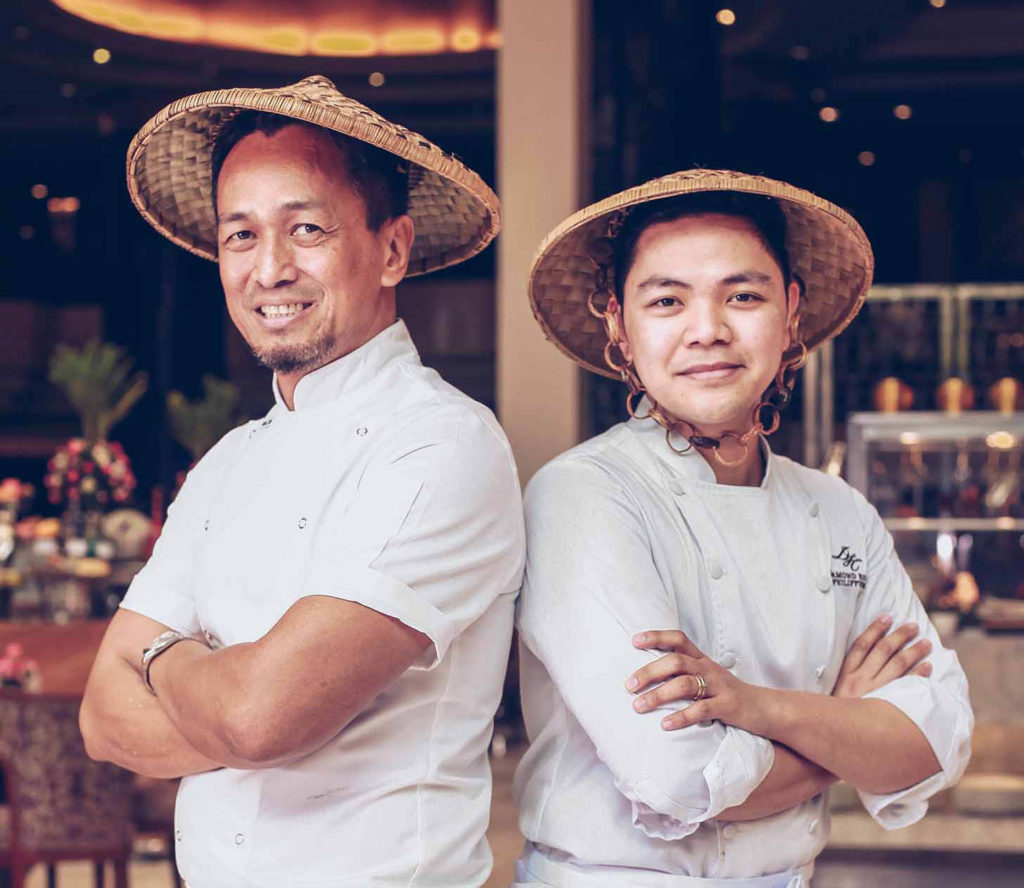
Imagine that!
So if you’re aspiring to be a success like Chef Miko, you don’t need to go anywhere else to become a first-class chef. Just practice what you know, be the best you can be, put yourself out there, and the world will notice you!
And when it comes to skills, all you need to do is enroll in one of our classes at The Bailiwick Academy. All of our classes are from the world’s best bakers and chefs. That means that not only are these recipes tried, tested, and very delicious, but you can also use them to fulfill your dreams of becoming a world-class chef one day.
So what are you waiting for? Learn Chef Miko Aspiras’ delicious dessert recipes (as well as many others) – sign up at The Bailiwick Academy today!
See you inside!
—
Keep coming back to The Bailiwick Academy blog for more kitchen tips, tricks, and much more!
]]>